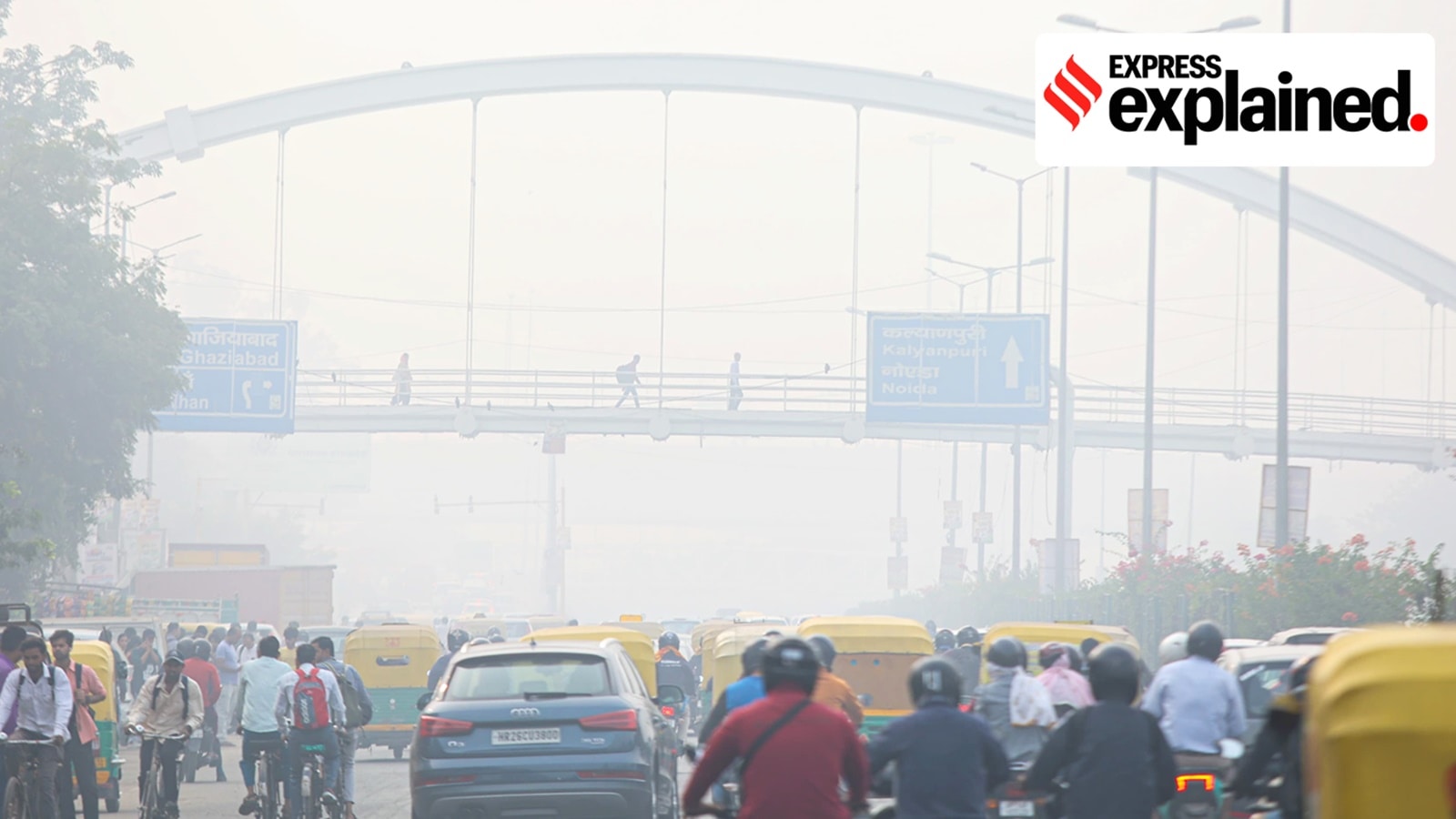Why BS-III petrol and BS-IV diesel four-wheelers have been banned in Delhi-NCR
The Delhi Traffic Police on Friday issued challans of Rs 20,000 each to 514 vehicles for flouting the ban. What is the categorisation and the rationale for the ban?
 Dense smog in New Delhi on Thursday (November 14). (Express photo by Praveen Khanna)
Dense smog in New Delhi on Thursday (November 14). (Express photo by Praveen Khanna)With high levels of pollution in Delhi and smog blanketing the city, the Delhi government has introduced measures to improve the air quality. The Graded Response Action Plan (GRAP) Stage III came into effect on Friday (November 15). Under it, a ban has been imposed on BS-III petrol and BS-IV diesel four-wheelers in the National Capital Region (NCR).
As The Indian Express reported, the Delhi Traffic Police on Friday issued challans of Rs 20,000 each to 514 light motor vehicles under both categories. What is the categorisation and the rationale for the ban? We explain.
What are Bharat Stage emissions standards?
The BS — or Bharat Stage — emission standards are norms instituted by the government to regulate the output of air pollutants from internal combustion engine equipment, including motor vehicles.
India first introduced emission norms in 1991 and tightened them in 1996, when most vehicle manufacturers had to incorporate technology upgrades like catalytic converters to cut exhaust emissions. Fuel specifications based on environmental considerations were notified first in April 1996 and were to be implemented by 2000.
India was following the European (Euro) emission norms, though with a time lag of five years as they were introduced a few years after the Euro ones. Following a landmark Supreme Court order of April 1999, the Centre notified Bharat Stage-I (BIS 2000) and Bharat Stage-II norms, broadly equivalent to Euro I and Euro II respectively. BS-II was for the NCR and other metros; BS-I was for the rest of India.
After subsequent progressions up to BS-IV over the years, the Central government in 2016 announced the country would skip the BS-V norms and adopt BS-VI norms by 2020. The intermediate BS-V standard was originally scheduled for 2019 but was leapfrogged because of increasing air pollution levels in many parts of India. It is now mandated for all new cars from the adoption of new norms in 2020.
What is the difference between BS-IV and BS-VI norms?
The main difference between the BS-IV and the BS-VI auto fuel norms is the presence of sulphur. Greater limitations have been placed on the level of pollutants allowed under the latter.
The BS-VI fuel was estimated to bring around an 80 per cent reduction of sulphur, from 50 parts per million to 10 ppm. Analysts estimated that the emission of NOx (nitrogen oxides) from diesel cars would be reduced by nearly 70 per cent and 25 per cent from cars with petrol engines.
The United States Environmental Protection Agency (EPA) states that short-term exposure to high levels of nitrous oxide can aggravate respiratory diseases like asthma, and lead to other problems such as coughing or difficulty in breathing. Long-term exposure may also contribute to the development of asthma and could increase susceptibility to respiratory infections. Also, gaseous sulphur oxides can harm trees and plants at high concentrations, by damaging foliage and decreasing growth.
At the time of the announcement in 2016, manufacturers argued that they still had unsold stock of BS-IV vehicles and requested time till March 31, 2020, to sell their stock. Using the introduction of higher-grade fuel will be beneficial only if it is done in tandem with the rollout of BS-IV-compliant vehicles, they said. Using BS-VI fuel in the current BS-IV engines or, congrap versely, running BS-VI engines on the current-grade fuel, may be ineffective in curbing vehicular pollution, and may damage the engine in the long run.
- 01
- 02
- 03
- 04
- 05






































